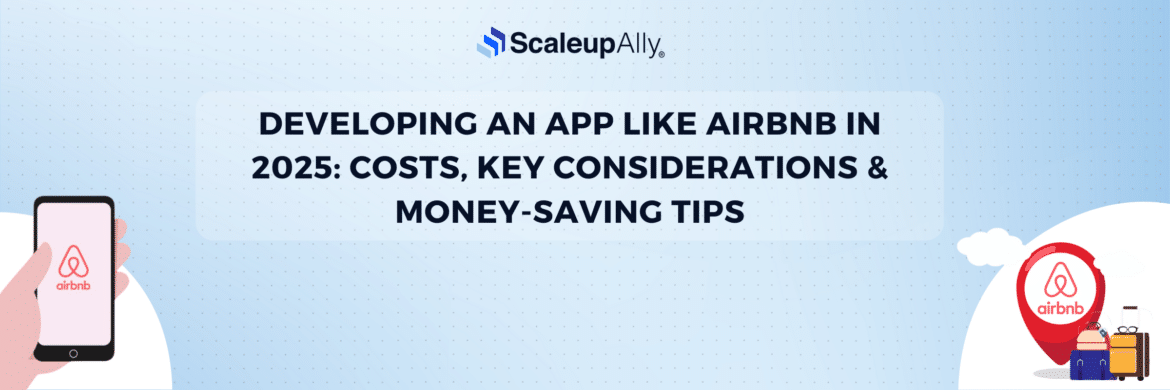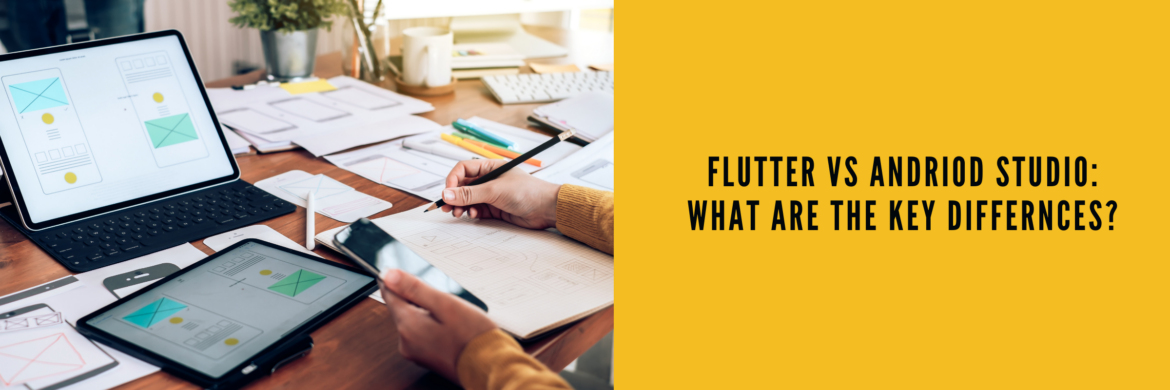
Native vs Cross Platform Mobile Development: What To Choose?
Suprabhat Sen | January 28, 2024 , 9 min read
Table Of Content
A mobile app can kickstart your business by making it more visible and accessible to customers. It’s not just about whether you need a mobile app but also about finding the right app that your customers will love.
According to Statista, mobile app downloads are consistently increasing. In 2021, the games segment led with over 100 billion downloads, followed by mobile photo and video apps with 19.6 billion downloads.
The global mobile application market is thriving due to advancements in software development kits, programming languages, and innovative mobile phones.
In addition to deciding on the type of app you want, many businesses must choose the best mobile app development company to bring their idea to life. With 24.5 million app developers, businesses must identify the right developer with the expertise and approach they need.
There are two main app development approaches: native and cross-platform. This article will explore these approaches and help you decide which is best for your next project.
What is cross-platform mobile app development?
Cross-platform mobile app development refers to creating mobile applications that can run on multiple operating systems, typically iOS and Android, using a single codebase. This method aims to streamline the development process, reduce time-to-market, and optimize resources by allowing developers to write code once and deploy it across different platforms.
Pros of Cross-Platform App Development
- Cost Efficiency: Developing a single codebase for multiple platforms results in lower development costs compared to building separate native apps for each operating system.
- Time-to-Market: Cross-platform development accelerates the development cycle as changes made to the codebase apply universally. This enables quicker deployment and faster entry into the market.
- Code Reusability: Developers can reuse a significant portion of the code across different platforms, reducing redundancy and making maintenance more efficient.
- Wider Reach: With a single codebase, apps can reach a broader audience, catering to users on both iOS and Android devices.
Cons of Cross-Platform App Development
- Performance Trade-offs: Cross-platform apps may experience performance issues compared to native counterparts, especially for resource-intensive tasks or applications requiring complex graphics.
- Limited Access to Native Features: Some platform-specific features and functionalities may be challenging to access or fully leverage, limiting the app’s capabilities.
- Framework Limitations: The choice of cross-platform frameworks may come with limitations, and developers may face constraints in implementing certain features or optimizing performance.
- Platform Updates and Compatibility: Keeping up with frequent updates to both iOS and Android operating systems, along with ensuring compatibility, can pose challenges for cross-platform developers.
Cross-platform mobile app development offers notable advantages in terms of cost efficiency, time-to-market, and code reusability. However, it comes with trade-offs in terms of performance, access to native features, and potential framework limitations.
What is Native mobile app development?
Native mobile app development involves creating applications specifically for a single operating system, such as iOS or Android. Developers use platform-specific languages and tools to optimize performance and leverage the unique features of each platform.
Pros of Native App Development
- Optimized Performance: Native apps are highly optimized for the specific platform, providing superior performance and responsiveness. This is crucial for resource-intensive tasks and complex functionalities.
- Access to Native Features: Native development allows seamless integration with platform-specific features, such as GPS, camera, and gestures, offering a richer and more tailored user experience.
- Enhanced User Experience: Native apps adhere to the design principles and guidelines of the respective platforms, resulting in an intuitive and consistent user interface. This enhances user satisfaction and engagement.
- Platform-Specific Design: Developers can create platform-specific design elements, ensuring the app feels natural and familiar to users of either iOS or Android.
- Optimized for Latest Updates: Native apps can quickly adopt the latest features and updates of the operating system, providing users with cutting-edge functionalities.
Cons of Native App Development
- Higher Development Costs: Developing separate apps for each platform can result in higher initial development costs compared to cross-platform alternatives.
- Longer Development Time: Building native apps for multiple platforms extends the development timeline, potentially delaying time-to-market.
- More Resources Required: Maintaining separate codebases and development teams for each platform requires more resources in terms of both personnel and time.
- Limited Market Reach: Native apps are confined to their respective platforms, potentially limiting the audience reach compared to cross-platform alternatives.
- Challenges in Updates: Updates need to be separately developed and deployed for each platform, making the process more complex and time-consuming.
Native mobile app development provides excellent performance, access to unique device features, and a user experience tailored to the platform. Nevertheless, this approach tends to be more expensive and time-consuming, and the apps may not reach as wide an audience compared to other development methods.
Comparison between Native and Cross-platform App Development
When deciding between native and cross-platform app development, it’s crucial to weigh the strengths and weaknesses of each approach.
The table below provides a snapshot of key considerations for both native and cross-platform app development that will help you make wise decision:
| Aspect | Native Development | Cross-Platform Development |
| Performance | Optimized for specific platforms, offering superior performance. | May experience performance trade-offs, especially for complex tasks. |
| Access to Native Features | Seamless integration with platform-specific features. | Limited access to some native functionalities. |
| User Experience | Adheres to platform design guidelines, ensuring consistency. | Can achieve consistency but may not match the platform’s nuances. |
| Development Cost | Higher initial development costs due to separate codebases. | Generally more cost-effective with a single codebase. |
| Development Time | Longer development time, especially for multiple platforms. | Shorter development time, quicker time-to-market. |
| Learning Curve | Requires proficiency in platform-specific languages. | Generally has a lower learning curve, especially for web developers. |
| Market Reach | Limited to a specific platform (iOS or Android). | Reaches a broader audience with applications on multiple platforms. |
| Updates and Maintenance | Updates need to be separately developed for each platform. | Universal updates but may face challenges in adopting new features. |
| Customization | Platform-specific design, highly customized for each OS. | Some limitations in achieving highly customized platform-specific UI. |
| Use Cases | Ideal for performance-critical applications and platform-specific features. | Suitable for projects prioritizing cost efficiency and quicker deployment. |
How do you choose between cross-platform and native mobile app development?
Choosing between cross-platform and native mobile app development is a critical decision that significantly impacts your project’s success. To make an informed choice, consider the following factors:
1. Project Requirements
Performance Demands: If your app requires high performance and relies heavily on platform-specific features, native development may be more suitable.
Universal Functionality: Cross-platform development might be a cost-effective solution if your app has standard features that don’t heavily depend on platform nuances.
2. Budget Constraints
Cost Considerations: Evaluate your budget limitations. Native development typically incurs higher initial costs, while cross-platform development is often more cost-effective due to code reusability.
3. Time-to-Market
Speed of Deployment: If time-to-market is a crucial factor and you want to reach a broader audience quickly, cross-platform development generally offers faster deployment with a single codebase.
4. User Experience Goals
Platform-Specific Design: If achieving a highly customized, platform-specific design is a priority, native development allows for more intricate design details.
Consistency Across Platforms: If consistent user experience across platforms is a priority, cross-platform development can help maintain a unified look and feel.
5. Performance Expectations
Resource-Intensive Tasks: If your app involves resource-intensive tasks, complex graphics, or demands the utmost performance, native development is likely the better choice.
6. Development Team Expertise
Programming Languages: Assess the expertise of your development team. If they are already proficient in platform-specific languages, native development may be more efficient. Cross-platform development might be preferable if your team is more versed in web technologies.
7. Future Scalability
Long-Term Goals: Consider the long-term scalability of your app. If you anticipate expanding to more platforms in the future, cross-platform development provides a more scalable solution.
8. Market Research
Target Audience: Understand your target audience and the devices they predominantly use. This insight can guide your decision based on the platforms your audience favors.
9. Updates and Maintenance
Ease of Maintenance: If ease of maintenance and updates is a priority, cross-platform development simplifies the process with universal changes. Native development may require separate updates for each platform.
10. User Feedback and Reviews
Learn from Others: Analyze reviews and feedback from similar apps in your industry. This can provide insights into user preferences and experiences with native and cross-platform apps.
There is no one-size-fits-all answer. Carefully evaluate your project’s specific needs, weigh the advantages and disadvantages, and choose the best approach with your goals, resources, and user expectations.
Conclusion
With native development, your app’s interface and user experience remain untouched. However, using cross-platform frameworks may lead to a slight impact on performance or design. If you’re a startup looking to release apps for both iOS and Android, choosing cross-platform development might be a better fit.
At ScaleupAlly, with expertise, a strong portfolio, and years of experience in this area, we can turn your app idea into a reality. Get in touch with our team.
Frequently Asked Questions
Q: What is the typical timeline for mobile app development?
The timeline for app development varies based on complexity, features, and platform. On average, it can range from a few months to a year.
Q: Do I need technical expertise to oversee app development?
While technical knowledge is beneficial, it’s not mandatory. Collaborating with a knowledgeable development team like ScaleupAlly can help you navigate the process effectively.
Q: Can cross-platform apps achieve a look similar to native apps?
Yes, with the right design practices and frameworks, cross-platform apps can achieve a visually similar appearance to native apps.
Related Blogs

Laravel + Elasticsearch: Smart Search for E-commerce in 2025
Learn how to integrate Elasticsearch with Laravel, from setup and configuration to indexing. Improve your app's search performance using Laravel Elasticsearch.
ScaleupAlly Team
Jul 3 ,
15 min read

Developing an App Like Airbnb in 2025: Costs, Key Considerations & Money-Saving Tips
Discover the cost to build an app like Airbnb, key factors, app types, and smart ways to optimize development expenses for better ROI.
Suprabhat Sen
Jun 29 ,
10 min read

Flutter vs Android Studio: What are the Key Differences?
Flutter vs Android Studio: Wondering which technology to choose to build your next app. Here is a detailed guide that will help you make a decision.
Suprabhat Sen
Jun 28 ,
14 min read








